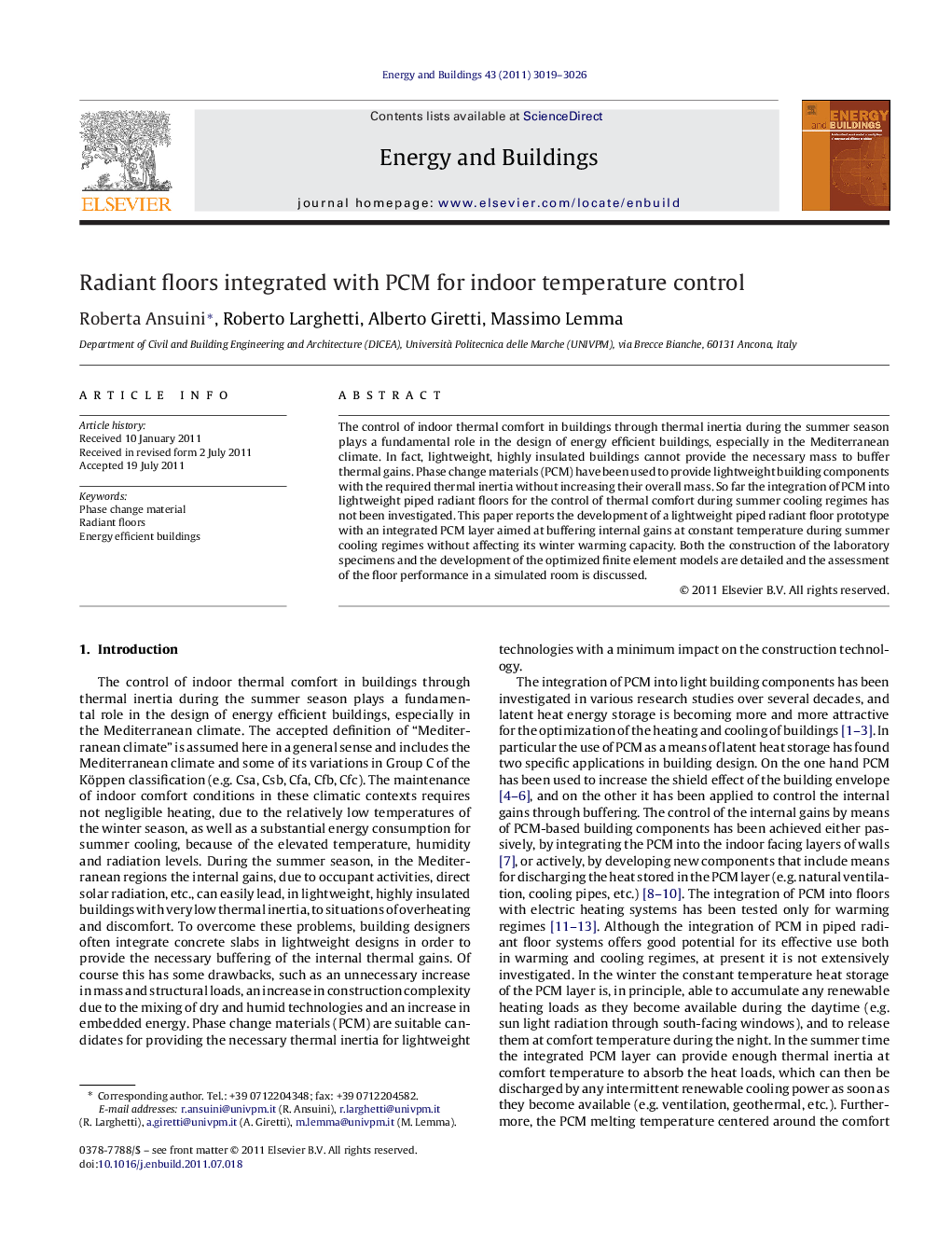| Article ID | Journal | Published Year | Pages | File Type |
|---|---|---|---|---|
| 264118 | Energy and Buildings | 2011 | 8 Pages |
The control of indoor thermal comfort in buildings through thermal inertia during the summer season plays a fundamental role in the design of energy efficient buildings, especially in the Mediterranean climate. In fact, lightweight, highly insulated buildings cannot provide the necessary mass to buffer thermal gains. Phase change materials (PCM) have been used to provide lightweight building components with the required thermal inertia without increasing their overall mass. So far the integration of PCM into lightweight piped radiant floors for the control of thermal comfort during summer cooling regimes has not been investigated. This paper reports the development of a lightweight piped radiant floor prototype with an integrated PCM layer aimed at buffering internal gains at constant temperature during summer cooling regimes without affecting its winter warming capacity. Both the construction of the laboratory specimens and the development of the optimized finite element models are detailed and the assessment of the floor performance in a simulated room is discussed.
► Development of radiant floor with PCM for the control of thermal comfort in summer. ► Construction of laboratory specimens and optimization through custom steel matrix. ► Development of finite element models, assessment of performance in simulated room. ► In summer the PCM floor in a 16 m2 room saves 25% of cooling water. ► In winter warming regime the optimized PCM layer does not affect heating behavior.
